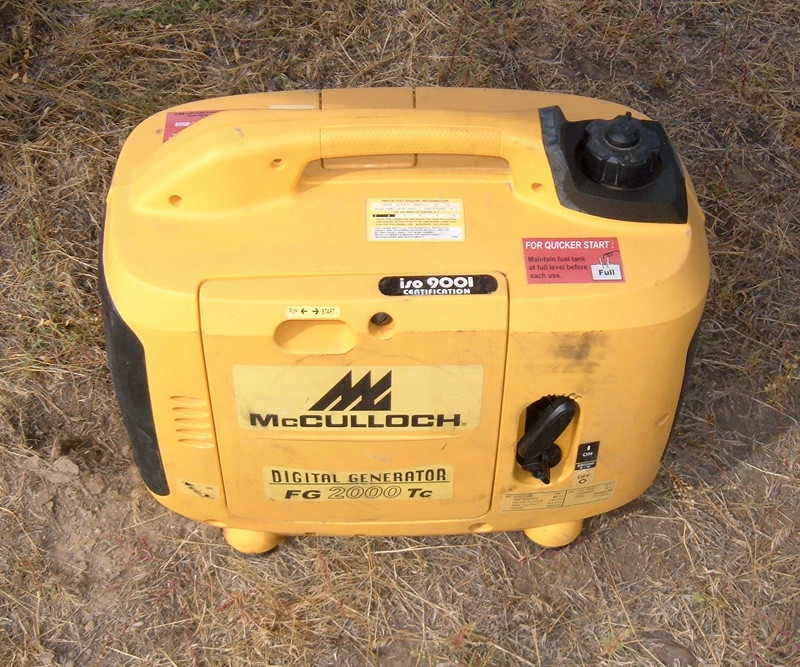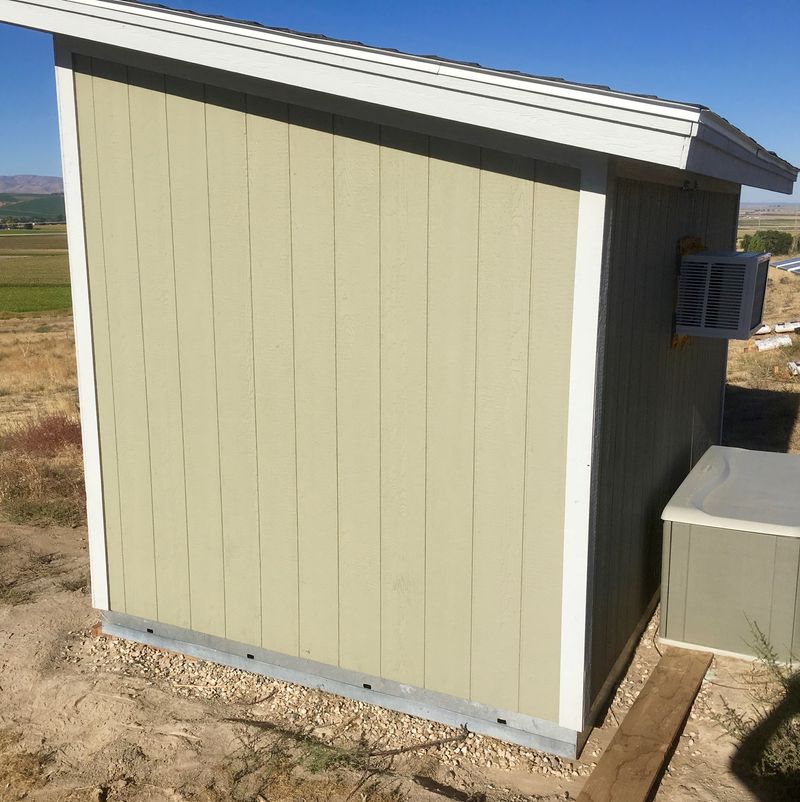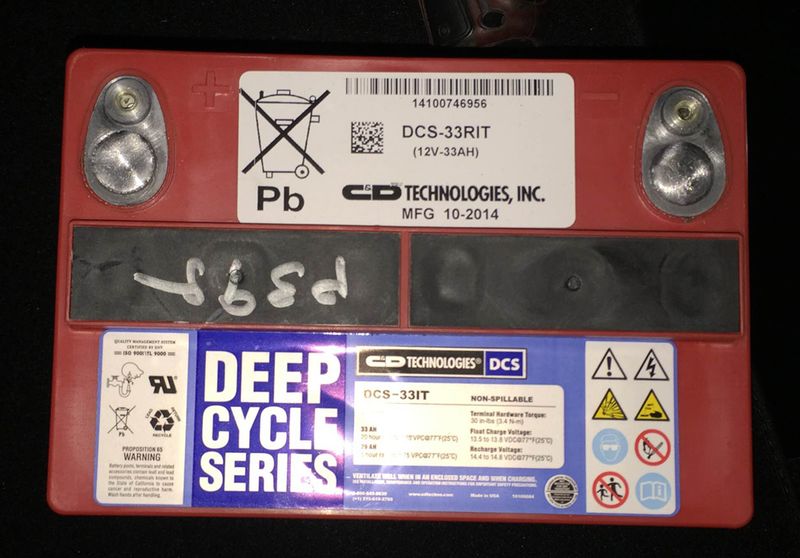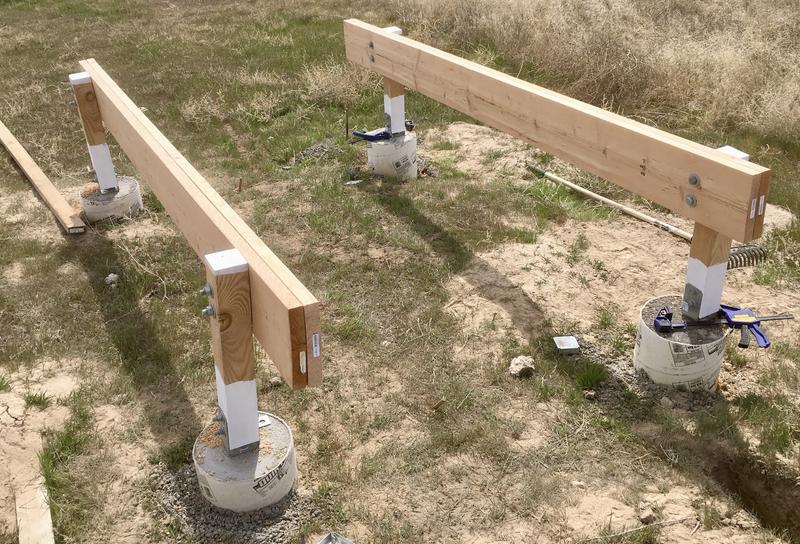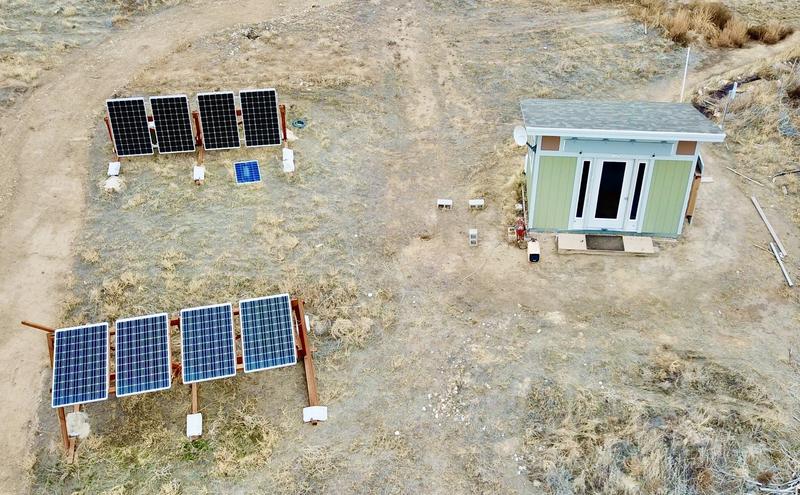I’ve just finished three posts about how I mounted my solar panels for my solar powered office (panel mounts revision 1, panel mounts revision 2, east facing morning panels). I’ve got 2850W of solar panels hung for an office that can run, in a pinch, on just over 200W. But winter days are short, winter days can be dark, and winter can have inversion layers out here that lead to a month of clouds in a bad year.
So now, after all the solar panel discussion, it’s time to talk about my backup generator - a key part of a ~balanced breakfast~ solar powered office. Really, they’re needed for any off grid system.
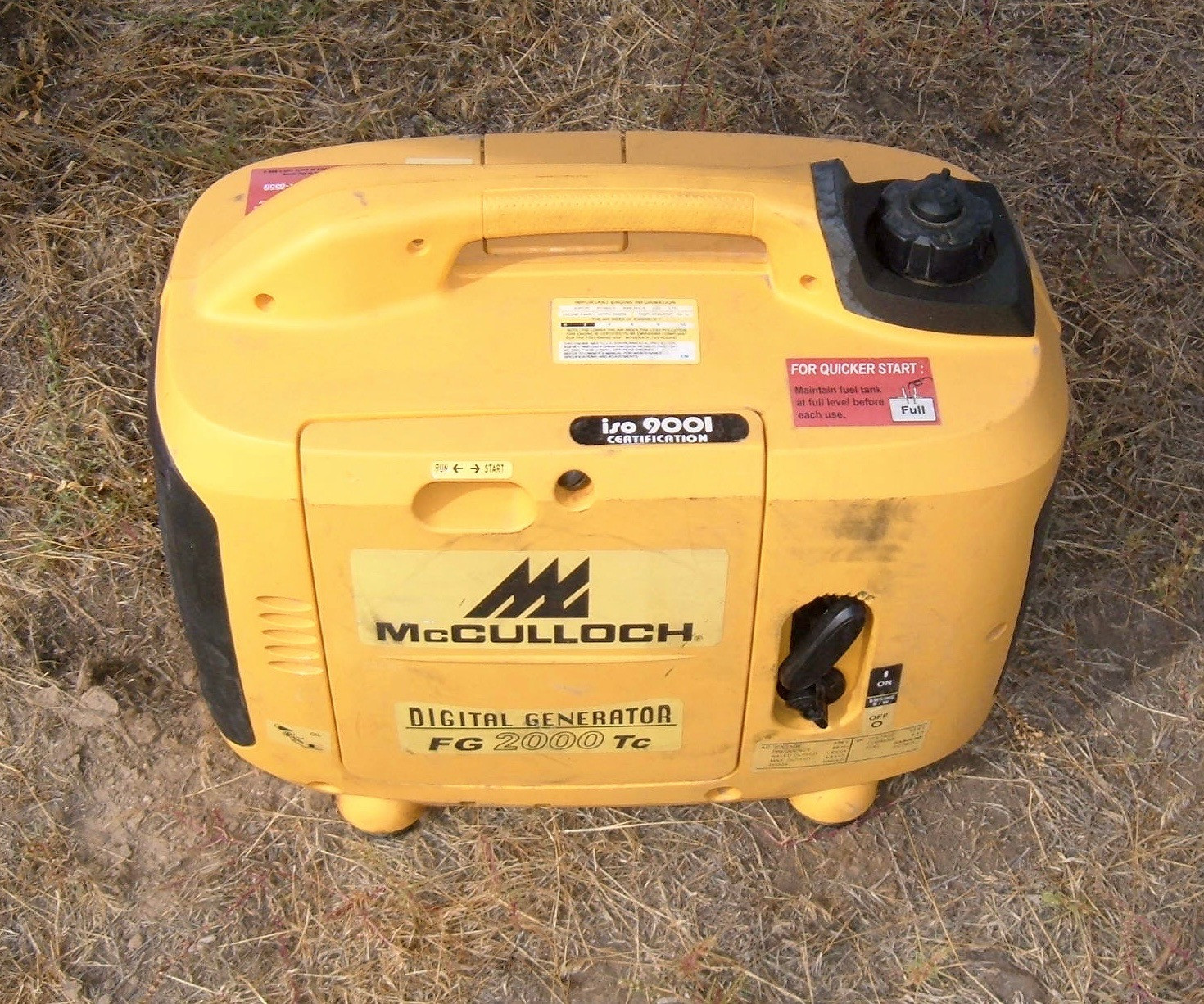
My generator is a rebrand of a knockoff of a Honda inverter generator - and it works great! Read on to see how this hooks into the rest of my system.
Why a Backup Generator?
I earn my living out of my office. This means that I need reliable power. Without power, I don’t get any work done. That’s one downside of a tech job - computers need power. Laptops have batteries, but I don’t have internet without the radios running, so… I need power.
In addition to the reasonably obvious situation of “It’s the middle of winter, there’s an inversion layer, and it’s been cloudy all week,” there’s the second situation best described as, “Something has failed in my primary power system.” Both of those require a backup, and after some conversations on IRC (yes, there are off grid IRC channels, and I’ll let you find them yourself), I decided to go with a generator that can cover both use cases instead of a DC generator that just charges my battery bank.
Finally, a generator is cheaper than batteries. Even for deep cycle lead acid batteries, draining them deeply isn’t good for the lifespan. I’ve got the capacity if I need it, but I’d rather run the generator for half an hour than drain my batteries to 20%.
Doesn’t McCulloch Make Chainsaws?
Yes, they do!
Do they make generators? Well… no. They just rebadge generators.
This is actually a Kipor IG2000 generator. Kipor is sort of the “knockoff Honda” - similar in design, similar in execution, cheaper in cost, and somewhat crappier. For my needs? It’s probably fine.
Generator Types & Tradeoffs
Why this particular type of generator (“inverter generator”)? It’s quiet, reasonably efficient at partial load, and puts out clean power.
There are several different types of consumer generators on the market. The kind most people think of (cheap, loud, powerful) are fixed RPM units that typically operate at 3600 RPM (or 60Hz). You can get a cheap motor that runs at this speed, bolt a cheap generator head on the end, and have something that generates a lot of power for really not that much money. This type of generator is almost always in an open frame (they’re commonly referred to as “open frame generators”).
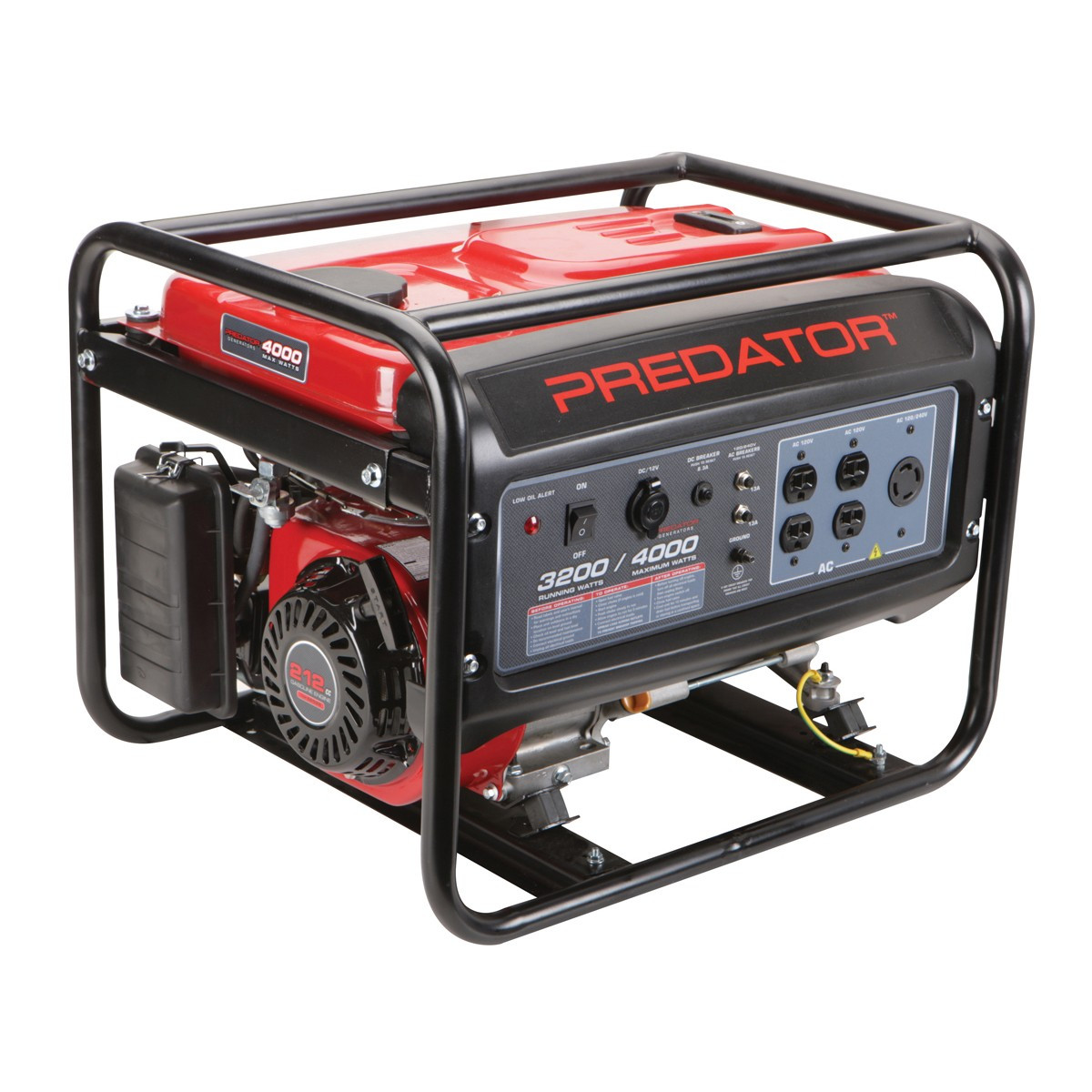
The downside of this type (I refer to them as “3600 RPM screamers”) is that they are usually insanely loud, they’re very inefficient at low power draw, and the power that comes out of them is incredibly filthy. It’ll be somewhere in the general ballpark of 60Hz, somewhere around 120V, plus or minus a good bit, and the waveform may even resemble a sine wave if you squint. Great for circular saws, less than optimum for computers and the like.
I used one of these generators for a while when I was building the foundation. Ancient, 4400W, loud enough to wake the dead, and worked just fine for power tools, though earplugs are recommended if you want to hear anything afterwards.
The other common type of consumer generator is an inverter generator. This generator has a motor driven alternator that produces power (of varying voltage and frequency) which is fed to an inverter that then outputs a fairly clean 60Hz power. Since the inverter is handling the output frequency regulation, the motor can spin at something other than 3600 RPM. Most of the time, the motor is turning much slower - which means a quieter, more efficient motor. Honda makes, by far, the most famous of this type. You’ve probably seen one purring quietly away at a festival somewhere, or out camping. They’re very quiet, sip fuel at partial load, and are also very expensive. A 4000W screamer is $400. A 2000W Honda inverter generator is $1000. Oof.
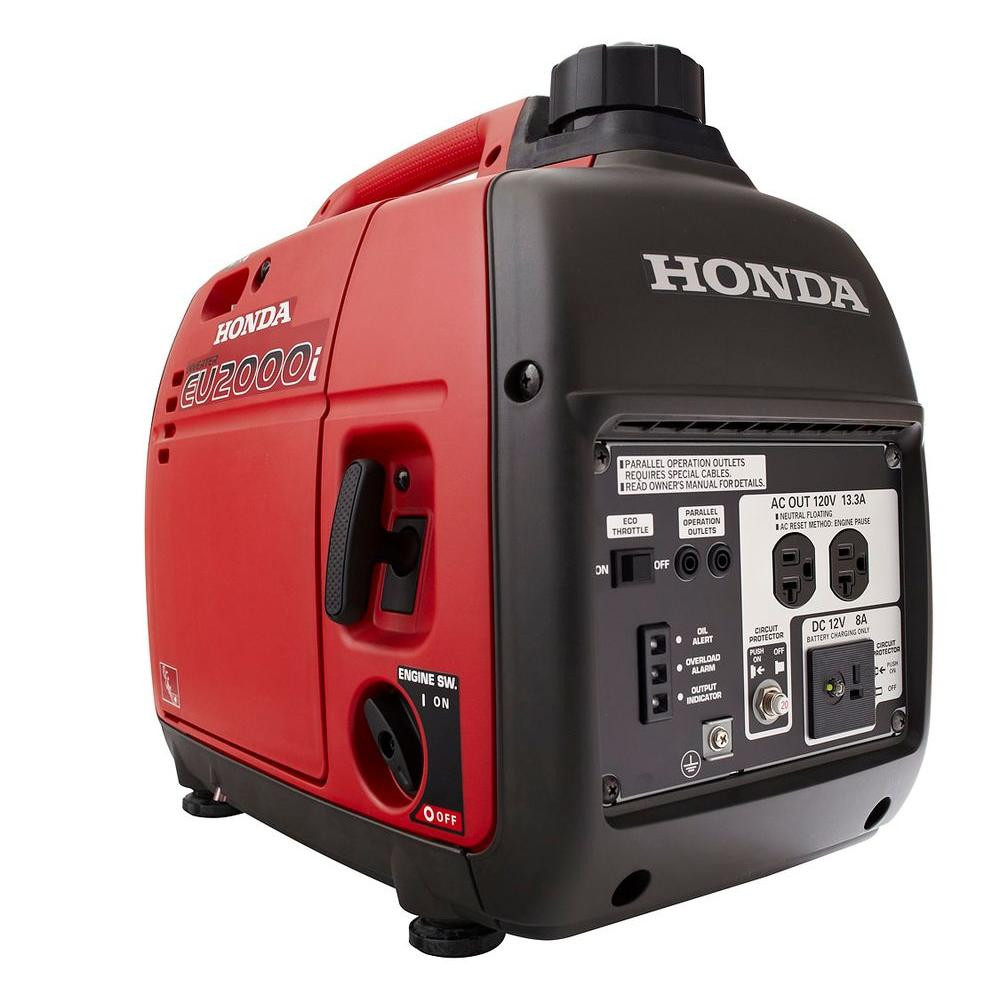
Kipor makes inverter generators as well, and they’re generally considered “cheap Honda clones.” They sell for half the price. Mine is used. I spent $300 on it. If it fails, I’ll either borrow the screamer, or run up the road to D&B and buy a “Real Honda” - they’re always in stock. It’s an expensive fallback plan, but that’s still cheaper than not working for a week while waiting for parts.
You can get really nice backup generators too - telco units that run on propane, auto-start, put out clean power, and are many thousands of dollars. They’re entirely overkill for my needs, so I have no real interest in spending the money on such a unit.
Connecting It In
At the business end of my generator, I get somewhere around 1800W of grid-like 120VAC power. If I ask for too much power (or ask it to ramp too quickly - easier with the eco-throttle on), either the inverter cuts the output, or the generator simply shuts down.
How does this feed into my system?
When getting my system set up, I specifically bought an “Inverter/Charger” instead of just an inverter. My unit (Aims Power) is a 48V 2000W inverter that can briefly peak to 6000W (useful for starting the compressor on my air conditioner and for driving the inductive horror show that is my spot welder) - but it’s also a charger. Mine will charge up to 20A (+/- 5A) at pack voltage - so around 1000W. I can control the charge rate (for a reasonable value of control) with the little knob second from the left. This is useful for slowly ramping up the charge rate so the generator doesn’t cut off when the charger cuts in, as well as for backing off the charge rate if my electrical demand is somewhat high.
My inverter/charger is designed for boats, as far as I can tell. When shore power (input AC) is connected, it waits 15 seconds to ensure the feed is stable, then synchronizes, switches the output to passthrough, and starts up the charger - the inverter is entirely offline when input AC is connected.
This means that if the generator is running, my office is entirely running on generator output, and everything from the solar panels is feeding into the battery bank - very useful, if one wants to charge the battery bank quickly.
Another nice feature is that the inverter control circuits are paying attention to the input AC and the inverter cuts in instantly (supposedly within 10ms) if input AC drops. I don’t even notice the switchover between generator and inverter - nothing reboots, lights don’t flicker, etc. This is absurdly useful - it means that if the AC kicks on (the generator can’t start it), I don’t lose power. It also means I can run the generator tank empty without running the risk of restarting computers. Regardless of the input source, the output AC into my office is solid.
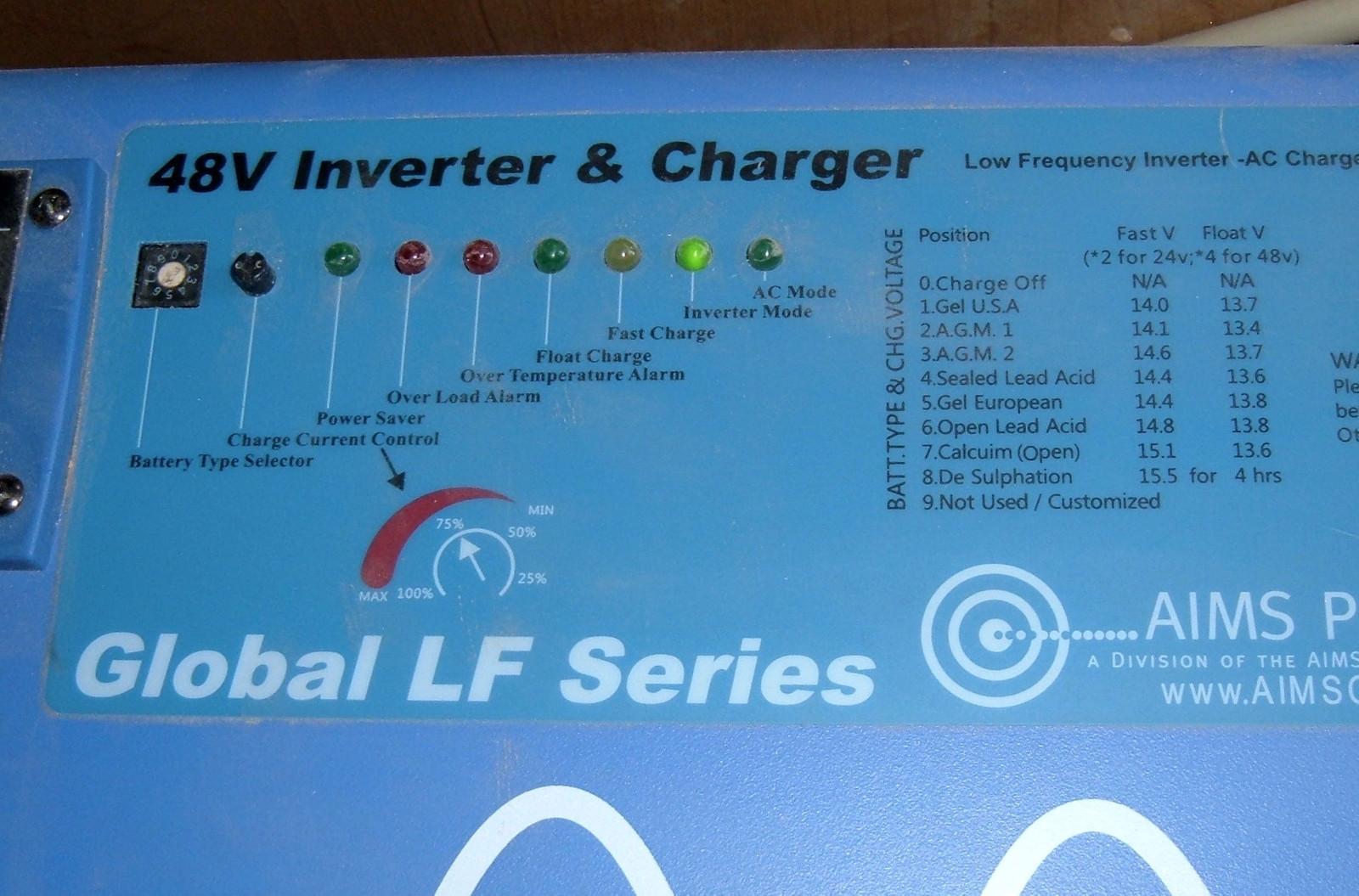
As to how I actually connect to the generator: I bought a heavy duty extension cord, chopped it in half, connected one side to the input terminals on the inverter/charger, and ran the male plug outside. I should probably wrap it up inside the battery box if I’m not using it to avoid it getting filthy like this. Importantly, this side is never live when exposed - it is hooked to the input side of the inverter, and is only ever energized by my generator.
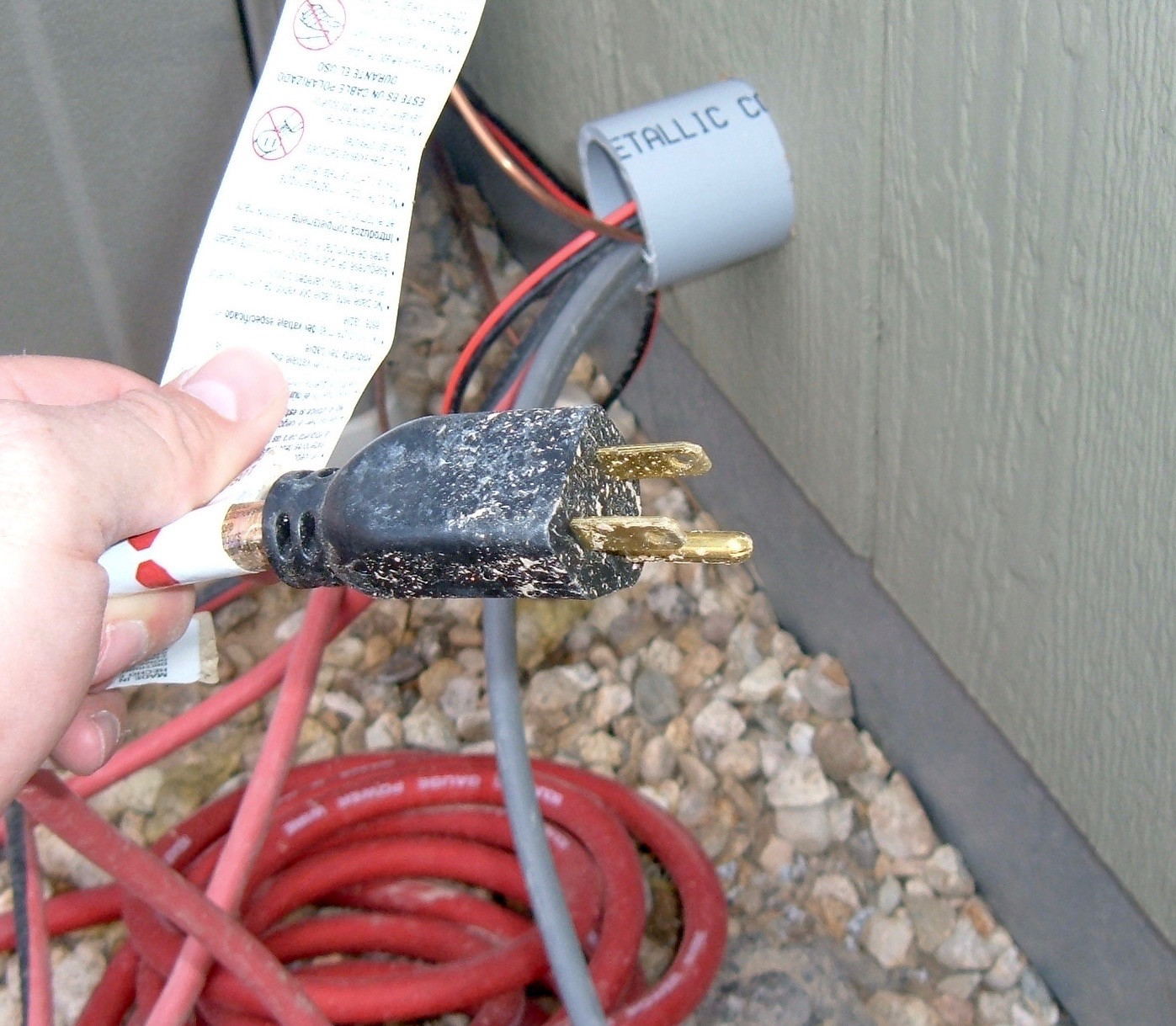
Running on Generator
I’ve run the generator for a few hours on cloudy days so far - not that I really needed generator output, but more that I wanted to prove the system and learn how all the parts interact. I’d rather not be fighting the generator when it’s really cold out. My personal cutoff for “Time to crank the generator” is a pack voltage of 48V at light load - so about 45% SoC on my pack. If I’m down that low, I’ve got everything non-essential turned off, and am running on about 250W. At this rate, an hour of generator should run me for roughly 4 hours, plus whatever solar is bringing in (even in really dark conditions, it’ll bring in 50-100W). This is also a high enough state of charge that if the generator won’t start, I have time to figure it out and/or get a replacement before things get critical.
The passthrough system means that when the generator is online, all the solar output flows into the battery bank (the inverter isn’t pulling anything out of the battery to run, since the AC comes from the generator). This means that whatever my panels are generating (150W on a dark afternoon) is going into the bank as well as what the charger is putting out.
One thing I cannot run off my generator is the air conditioner/heat pump. The generator simply can’t source enough power to start the compressor motor. This is a common criticism of the 2000W inverter generators, and is one reason why I got mine so cheap (the person selling it was upgrading to a 3000W unit that could run an air conditioner in his RV).
I can run my Folding@Home system (read, “heater”) on the generator if I back the charge rate off slightly. If I have to heat in the winter with resistive coils in my wall mount unit, I’ll probably do something productive with the power instead. Pushing 500W through resistive coils accomplishes just about the same amount of heating as pushing 500W through a CPU and GPU. In milder conditions, I heat with the heat pump side of my unit as this is more efficient.
I’ve considered converting the generator to propane. This gets me a bit less power, a bit more reliability, and radically better fuel storability. I no longer have a carburetor to gum up, and propane stores in a bottle more or less indefinitely. I’ll make this decision after winter, based on how much I end up using the generator. If I use it a lot, gas isn’t a problem. If I only use it a few times, going to a cleaner burning propane setup makes a lot of sense - I don’t need to run the generator every two weeks or so to keep things clean and functioning.
Redundancy Considerations
The other reason for the generator is power system redundancy. If I really need to, I can plug my main power distribution directly into the generator and skip my entire solar system. Here’s a list of potential failures and how the generator changes things:
- Solar panel failure. I’ve got two strings of 4 panels each, plus two additional “morning panels.” If something happens to a panel or two, I can simply replace the panel, and/or run on the remaining panels. I don’t need nearly all my panels to function, though they’d be nice in the winter. I’m not that worried about this.
- Charge controller failure. I have two of these, conveniently enough! My main controller can run my office easily, and my morning panels are on a 10A controller that will net me 400W. I don’t want to run on that alone, but that plus the generator can easily keep me powered while I replace my main charge controller. If the 10A PWM morning panel controller fails, I’ll barely notice.
- Battery bank failure. This is reasonably unlikely, but if something goes badly wrong with my battery bank, I’m stuck with the generator. I can build a ~48V lithium bank with spare batteries if I really need to do so, but that would take a few days.
- Inverter/charger failure. This is really where the generator comes in. I’m working on a DC power bus for a lot of critical loads (lighting, radios, etc), but if I lose my 120V output, I’m stuck - and I can run with the generator until I replace the inverter. Quick Amazon shipping is expensive, and I’ll only go through a gallon or two of gas a day. The downside here is that if the generator quits during an inverter failure, I ~go dark~ work from a coffee shop. Such is the nature of redundancy, though.
Really, I’m not that worried about it. If something happens, I switch to generator. If that generator quits, I bite the bullet, head up to the local D&B, buy a Honda, cringe at the price, and go back to work.
But my hope is that things don’t get that far.
If you’ve got an off grid setup, what do you use for your backup generator?
Comments
Comments are handled on my Discourse forum - you'll need to create an account there to post comments.If you've found this post useful, insightful, or informative, why not support me on Ko-fi? And if you'd like to be notified of new posts (I post every two weeks), you can follow my blog via email! Of course, if you like RSS, I support that too.
